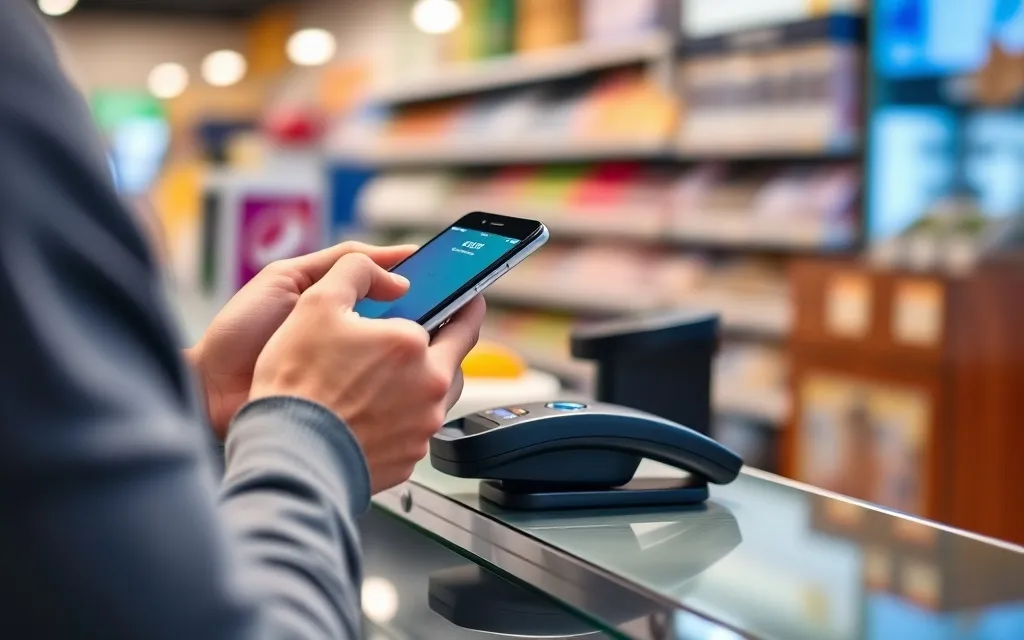The rapid evolution of technology is revolutionizing the way we handle financial transactions. At the heart of this change are mobile payments, redefining global finance. Let’s explore the future of mobile payments, highlighting groundbreaking innovations and the non-negotiable priority of security.
Mobile Payments: The Next Financial Revolution
In recent years, mobile payments have surged dramatically, with the global market valued at $67.5 billion in 2023 and set to skyrocket to $587.52 billion by 2030. This growth is fueled by advancements in Near Field Communication (NFC) and enhanced internet connectivity. Leaders like PayPal, Apple Pay, and Alipay are driving this transformation, altering everyday transactions.
The COVID-19 pandemic significantly accelerated the adoption of mobile payments as consumers worldwide sought contactless, safe transaction methods. Countries like the United States, Brazil, and Nigeria saw a remarkable rise in mobile payments. This momentum is expected to continue, especially with tech-savvy Generation Z and Generation Alpha favoring digital solutions.
Innovations Shaping the Future of Mobile Payments
The realm of mobile payments is brimming with innovations poised to make transactions smoother and user experiences richer. Digital wallets are becoming increasingly popular, anticipated to surpass credit cards by 2025 as the leading online payment method in many regions. In Hong Kong and Singapore, digital wallets like GrabPay and DBS PayLah! are projected to account for a significant portion of the market.
Technologies such as Artificial Intelligence (AI) and blockchain are pivotal in redefining this space. AI enhances fraud detection and personalizes user experiences, while blockchain ensures transparency and security. An excellent example is how blockchain can prevent double-spending and provide an immutable ledger of transactions.
Businesses are also tapping into mobile payment platforms to integrate loyalty programs and reward functions, boosting customer retention and satisfaction. Additionally, the "buy now, pay later" model, exemplified by services like Klarna and Afterpay, is gaining traction, offering consumers flexible payment options and further driving mobile payment adoption.
Security: The Pillar of Trust in Mobile Payments
While mobile payment technology advances rapidly, security remains a critical concern. The prevalence of malware, phishing, and data breaches underscores the need for strong security measures. Increasingly, biometric authentication such as facial recognition and fingerprint scanning safeguards transactions, ensuring they are secure and seamless.
Advanced encryption methods are vital to protect user data. However, Android users often face more significant security risks, necessitating continuous enhancements in security protocols. Financial institutions and mobile payment providers must prioritize cybersecurity to build consumer trust and safeguard sensitive information.
Global adoption of mobile payments varies, with South Korea, China, and the United States leading the charge. Conversely, regions with limited infrastructure face challenges in fully embracing this technological evolution. Nonetheless, the global trend points toward a future dominated by mobile payments.
Navigating the Future: Secure and Innovative Mobile Payments
Looking ahead, the future of mobile payments is set to be defined by relentless innovation and reinforced security. Integrating AI and blockchain technology, the rise of digital wallets, and the enhancement of security measures are crucial in crafting a secure and efficient mobile payment ecosystem.
Both businesses and consumers must stay informed and adaptable to leverage these advancements effectively. Embracing these innovations with a focus on security ensures mobile payments transform our transaction methods while maintaining safety and trust.
What are your thoughts on the future of mobile payments? How do you think these advancements will impact your daily transactions? Share your insights and join the conversation.

